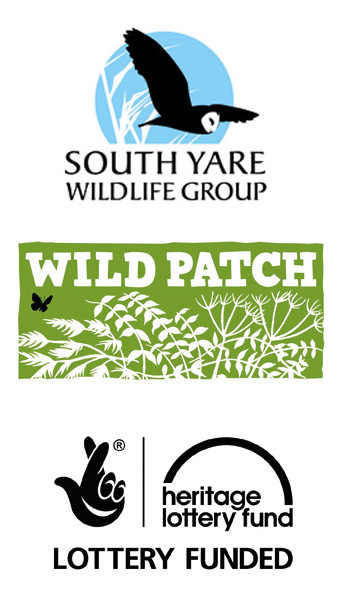On Sunday 4th September 24 people joined a walk to look at 4 local churches; two which are still standing, one has only just one ruined wall left, and one has completely disappeared. The walk started in Rockland St.Mary churchyard, where the ruins of one wall of the former medieval church of St.Margaret’s can still be seen. At the time of the Domesday book (1086) Rockland was amongst the largest 20% of settlements by population, which may be the reason it was split into 2 parishes in medieval times. There were 3 plants of botanical interest pointed out at the churchyard. Rockland has several yew trees planted, some of which are probably centuries old, with the newest having been planted by the school at the start of the new millennium. There are several theories why yew trees are common features in churchyards; it may be a remnant from pre-christian beliefs, when the tree’s evergreen leaves were held as sacred, or it may be that they were grown in the community owned enclosure of the churchyard to provide the wood for longbows, as all medieval men were obliged to train in archery every Sunday. The other plant of interest is the shrubby plant butchers broom, growing just outside the gate to the west, a tough evergreen bush that was formerly used to scrub and clean butcher’s blocks. Just further down the path, opposite the Normans farmyard is a Gingko tree, or Maidenhair tree, originally from China and a sole survivor of the type of trees that were around millions of years ago in the age of dinosaurs.
From St.Mary’s church we walked down the Star Piece footpath and across the Beck towards Hellington before turning down road to the small hamlet of Holverston, which now consists of just the Hall, a couple of barn conversions and a farm. However, at the time of the Domesday book , Holverston, along with Hellington, were amongst the top 40% of settlements by population in the country. Norfolk was a rich agricultural county in the past that supported a larger population but the Black Death in the 14th Century obviously had a devastating impact, with a possible 50% death rate that may have been even larger locally. The church at Holverston was demolished in the 18th century and the rubble used to make up the road but it is still possible to identify where the site was on a flat raised plateau with good views over the beck valley and the surrounding land. We then walked along the right of way along the hedge boundary towards the A146 but with a diversion, (by kind permission of Crown Point Estates) to avoid walking along the road verge. We made out way to Hellington Church where there were hotdrinks and cakes waiting for us. Hellington church has many interesting features, not least the round tower, Norman carved doorways, medieval porch and decorated style east window. One interesting feature are 2 small crosses carved into the stone pillars of the door columns, which some think were made by knights before they went away on a crusade, and it is amazing to think that many hundreds of years ago people from this area may have made the long journey to the distant lands of the Middle East
Hellington and Rockland Community Nature Reserve is on land that is leased from Rockland St.Mary church, with an annual rent being paid to that church, which enables the church to benefit financially and the community to benefit environmentally.



